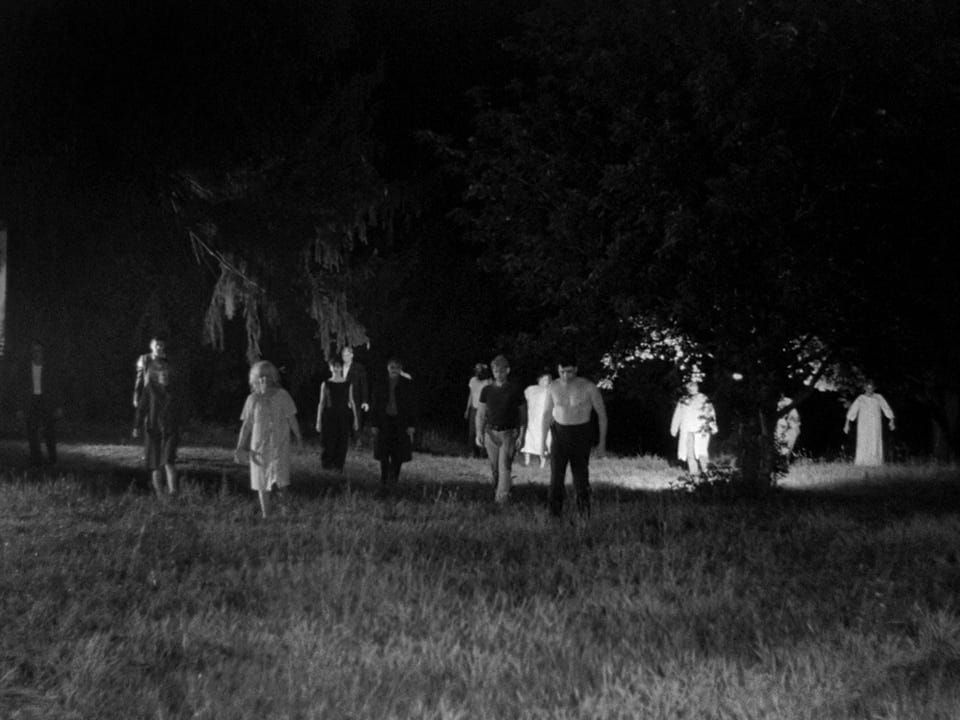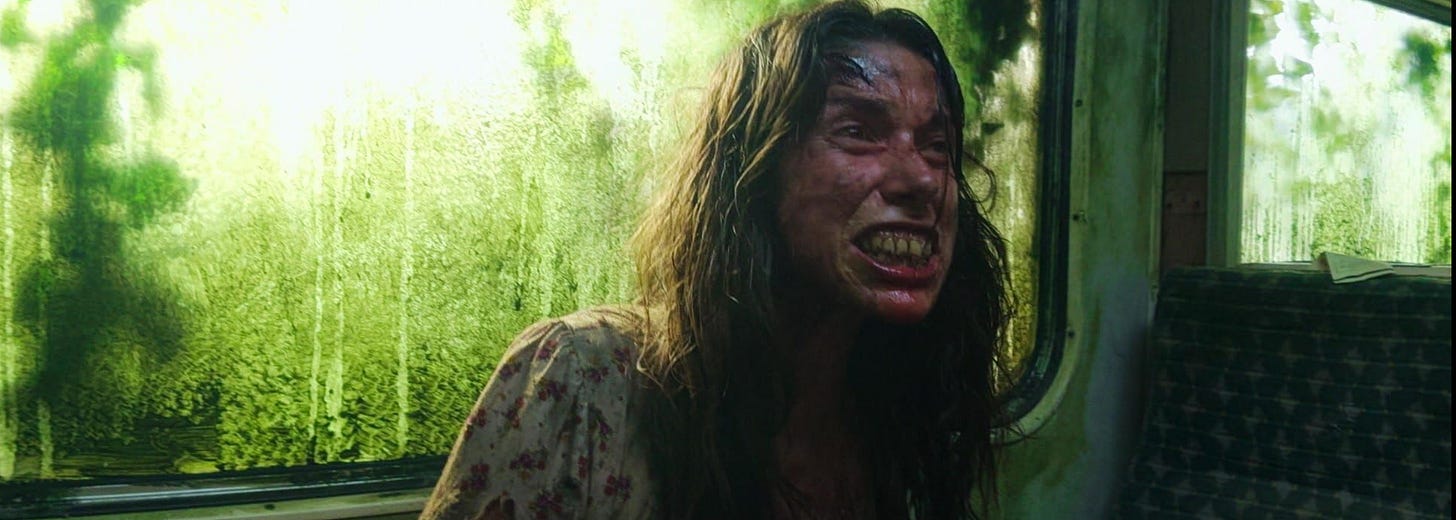I remember when I first saw the original Night of the Living Dead. I was in film school at the time and I was a little high (no, I didn’t go to class stoned, I was watching it at home thank you very much) and it kind of blew my mind — it was the first time I truly recognized the power of metaphor in horror films.
George Romero’s quintessential zombie movie came out in 1968, when the U.S. was deep in the throes of social upheaval as young people rebelled against the the fierce conservatism of the previous decades — the civil rights and women’s movements were in full swing and protests raged against the Vietnam War. It was also the year of two high profile assassinations — that of Martin Luther King, Jr., and Robert Kennedy.
The zombie is a mindless entity incapable of reason whose sole purpose is to feed on and infect the living, thereby creating more of its kind. The creature, then, becomes the perfect vessel upon which to project the fears and anxieties of society at large in specific moments in time.
In the case of Night of the Living Dead, we can view the ghouls as the embodiment of racist ideology and antiquated conservatism.
Among the protagonists are two young people — a Ben, a Black man, and Barbara, a white woman — who are separately traveling through rural Pennsylvania when the zombie apocalypse breaks out. They get trapped in a farmhouse along with a few others as dead white men reanimate and climb out of their graves to attack and eat the living.
Ben alone survives the attack only to be murdered at the end by a mob of white rednecks, including cops, who mistake him for a zombie. His death can be seen as a stand in for MLK’s death, and the film’s takeaway is a bleak one: we may think we have eradicated racism, but it still lives beneath the surface, waiting for the right moment to emerge and infect the masses.
The zombie is a mindless entity incapable of reason whose sole purpose is to feed on and infect the living, thereby creating more of its kind. The creature, then, becomes the perfect vessel upon which to project the fears and anxieties of society at large in specific moments in time.
In Romero’s 1978 sequel Dawn of the Dead, the protagonists barricade themselves inside a suburban shopping mall as the zombie apocalypse rages on. This time, the film is a critique of capitalism, with the zombies representing mindless American consumerism.
Yeon Sang-ho’s Train to Busan (2016) uses the zombie to explore the fractures within modern South Korean society — not just the lingering shadow of North–South tensions, but also class divisions, moral decay, and the emotional bankruptcy of late-stage capitalism. The film’s central metaphor lies in its confined setting: a high-speed train hurtling toward Busan as society collapses outside.
The zombie outbreak exposes what’s already infected the living—greed, selfishness, and the erosion of empathy. There’s also a powerful undercurrent of political and national anxiety — the fear of contagion as a stand-in for infiltration, mistrust, and contamination, whether from the North or from within.
In Danny Boyle’s 28 Days Later (2002), the zombie metaphor evolves once again, reflecting a post-9/11 landscape of fear and surveillance. This time, the zombies are infected with the “rage virus,” which we can link to the United States’ launch of the Global War on Terror. In this case, I would argue that the zombies represent any extremist ideology, whether that is terrorism itself or a glorification of the military-industrial complex.
The sequel, 28 Weeks Later (2007), directed by Juan Carlos Fresnadillo, shifts the horror from biological to political. The “rage virus” has been contained, and NATO forces attempt to repopulate and rebuild London — a metaphor for Western military interventionism masquerading as humanitarian aid.
In 28 Years Later (2025), Boyle explores how, decades after the virus first emerged, people are now essentially dealing with two viruses — the rage virus and a disinformation virus. We can equate this to our own post-Covid current reality.
I’ll wrap this up with a quick note about The Last of Us. I know people love this show, but I couldn’t get past the first episode, not because I thought it was boring or poorly executed, but because I found the premise to be deeply conservative and fiercely anti-mushroom (earnest).
First of all, the zombie outbreak is caused by the cordyceps mushroom (a really great mushroom btw!!), and it starts in Austin, Texas, a very liberal outpost in a very conservative state. I don’t think it’s a stretch to equate cordyceps with psychedelic mushrooms (although, fine, cordyceps don’t have psychedelic qualities), and the mind expansion that one typically experiences when you eat them. The show appears to condemn this. I would go so far as to say the zombie virus is a stand-in for the “woke mind virus” conservatives rail against, and a perceived liberal invasion spreading across Texas, and across the U.S.
Am I wrong? Should I watch more? Someone who’s seen them all tell me in the comments.
All of this is to say: zombies might be mindless, but a well-crafted zombie movie definitely is not.
Until next time,
Tara




Great write up. Mindless zombies are merely a reflection of humanity, sad but true
I think you should keep going with The Last of Us. If nothing else you should watch up through episode three and decide from there.